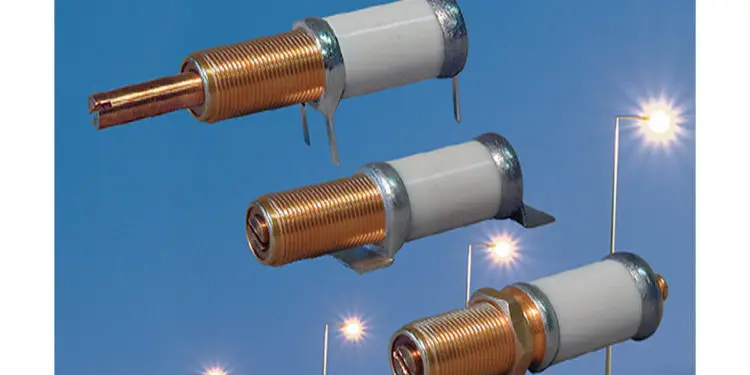Trimmer capacitors are variable components used to calibrate RF circuits during manufacturing or servicing. These components allow for variable tuning–think oscillator frequency values or rise and fall times. Should values drift over the life of the device, trimmer capacitors can be recalibrated as needed.
For sensitive applications like magnetic resonance imaging (MRI), these components help to optimize performance where any instability in time or temperature could impact the image output.
In essence, when a patient is positioned inside an MRI scanner tube and a magnetic field is applied, the proton spins inside their body’s molecules line up, facing the same direction. When a short, computer-generated RF signal is applied to a proton in the uniform field, it’s “nudged” to break formation. After the interruption, protons return to their original state of alignment. In the process of realigning, energy is emitted; the emitted energy can be measured and used to identify different types of molecules and their locations in the body. Trimmer capacitors are used to tune the TX and RX coils to Lamor Frequency, the frequency at which this energy is emitted. By extension, trimmer capacitor tuning is pivotal in MRI imaging accuracy.
In order to meet the high demand of MRI, important considerations for trimmer capacitor selection include:
| Q Factor | Influences power handling; higher Q lessens self-heating under RF conditions Important in filter circuits; impacts insertion loss |
| K Value (dielectric constant) | Determines the capacitance density in conjunction with dielectric withstand voltage; higher the K Value, smaller the component can be |
| Dielectric Withstand Voltage | The maximum DC voltage the part can withstand without failure |
| Non-magnetic Properties | Essential for MRI components, especially body coil and surface coils Close control of raw materials and processes required to ensure MRI accuracy and performance |
| Half-turn vs. Multi-turn Trimmers | Half turn trimmers have a lower Q, DWV, and precision; typically used in lower voltage and power environments where some tuning is required Multi turn trimmers boast higher Q, DWV, and performance; provides precision where exact tuning is imperative |
MRI components face severe non-magnetism requirements across components. In addition to careful material choices, Voltronics, a brand of Knowles Precision Devices (KPD), has developed a unique test setup to allow for Q and RF Voltage breakdown measurement at MRI operational frequencies. This has allowed for the development of parts designed specifically to meet the strict MRI requirements.
KPD is a leader in the design and manufacture of precision trimmer capacitors through our brands Voltronics and Johanson Manufacturing. The KPD trimmers portfolio includes air, glass, sapphire, and PTFE dielectrics that can be used from 1 MHz to over 2 GHz and at voltages up to 20,000 VDC. These trimmers are available in precision multi-turn and half-turn formats to accommodate any level of application demand.
featured image: multi-turn trimmer capacitor; source: Knowles Precision Devices































